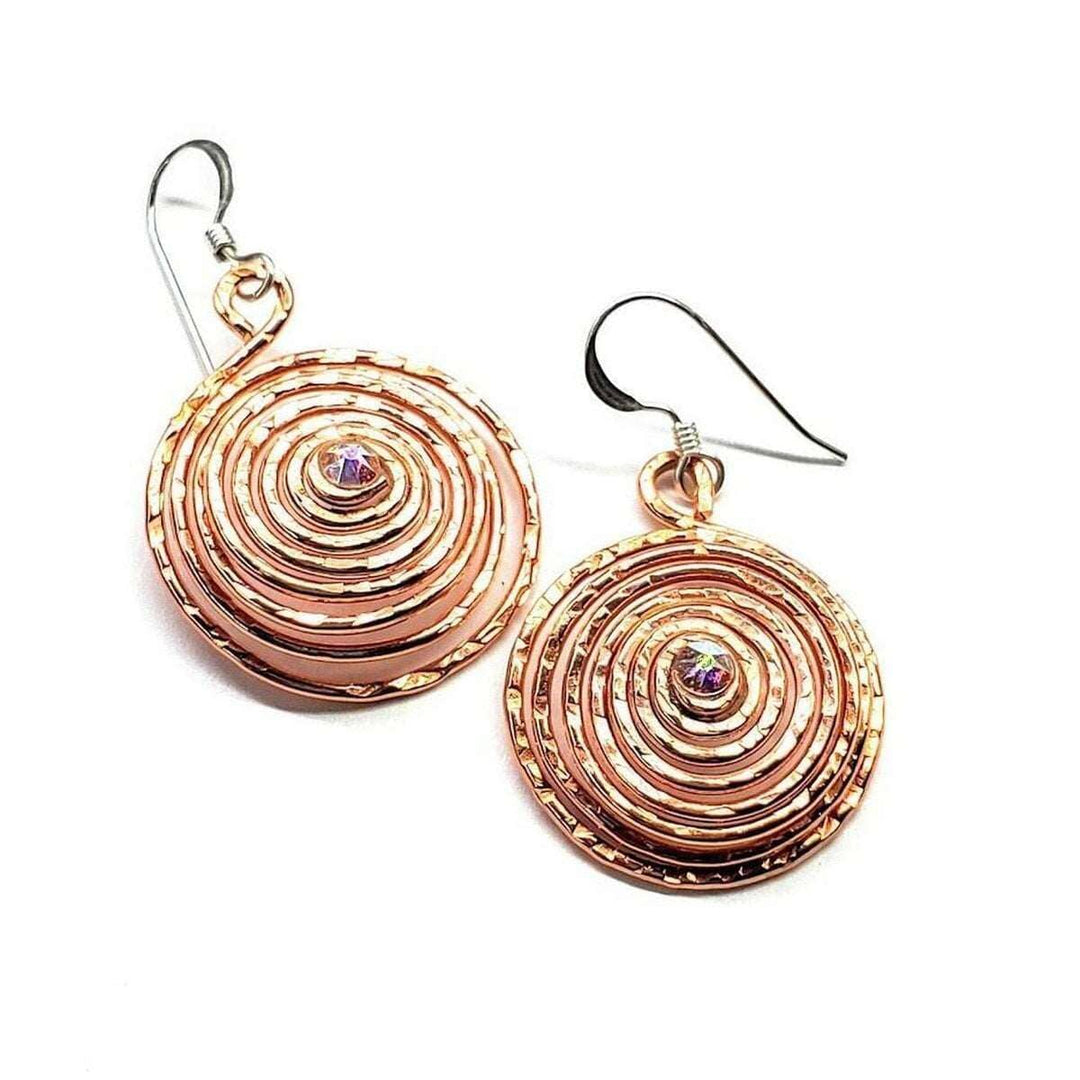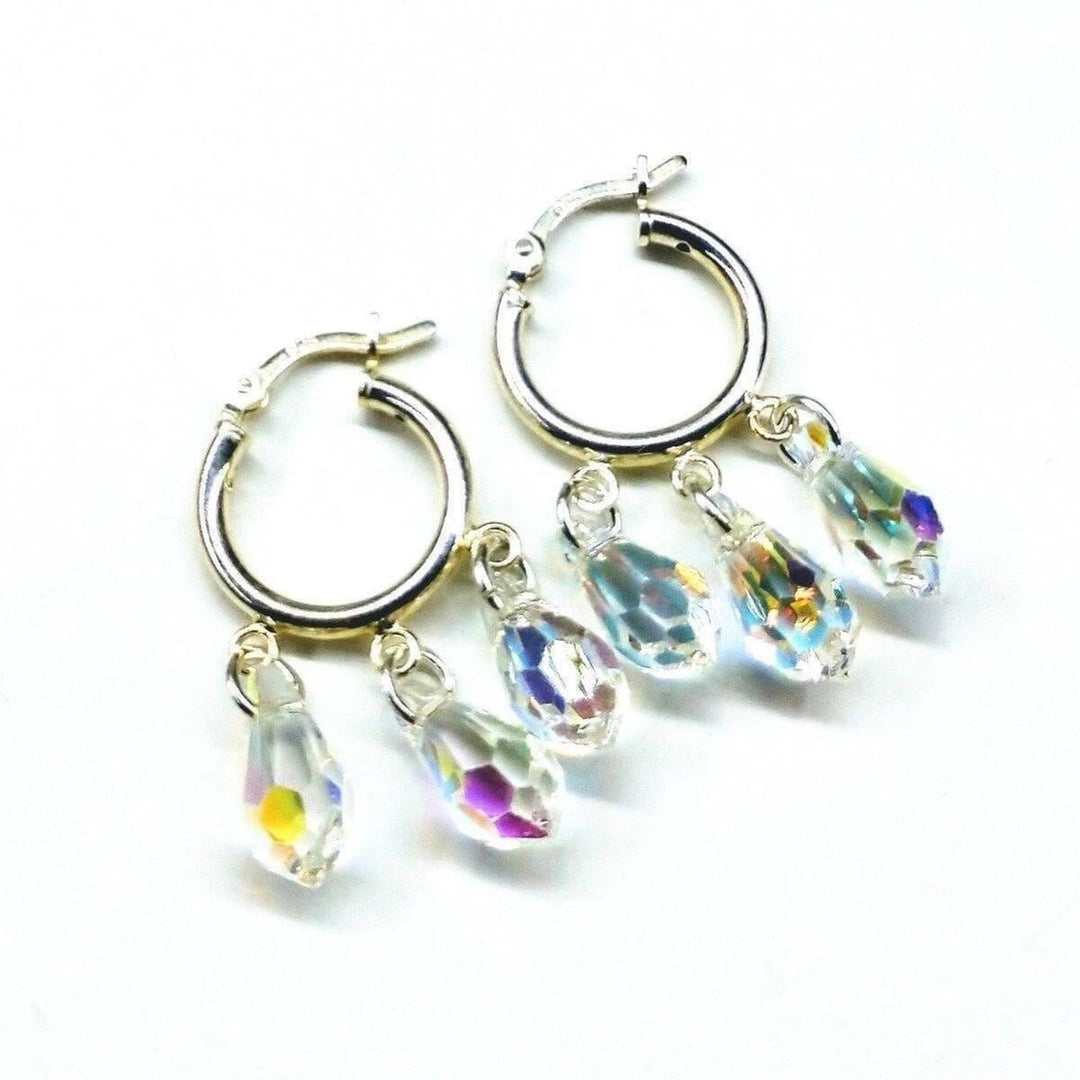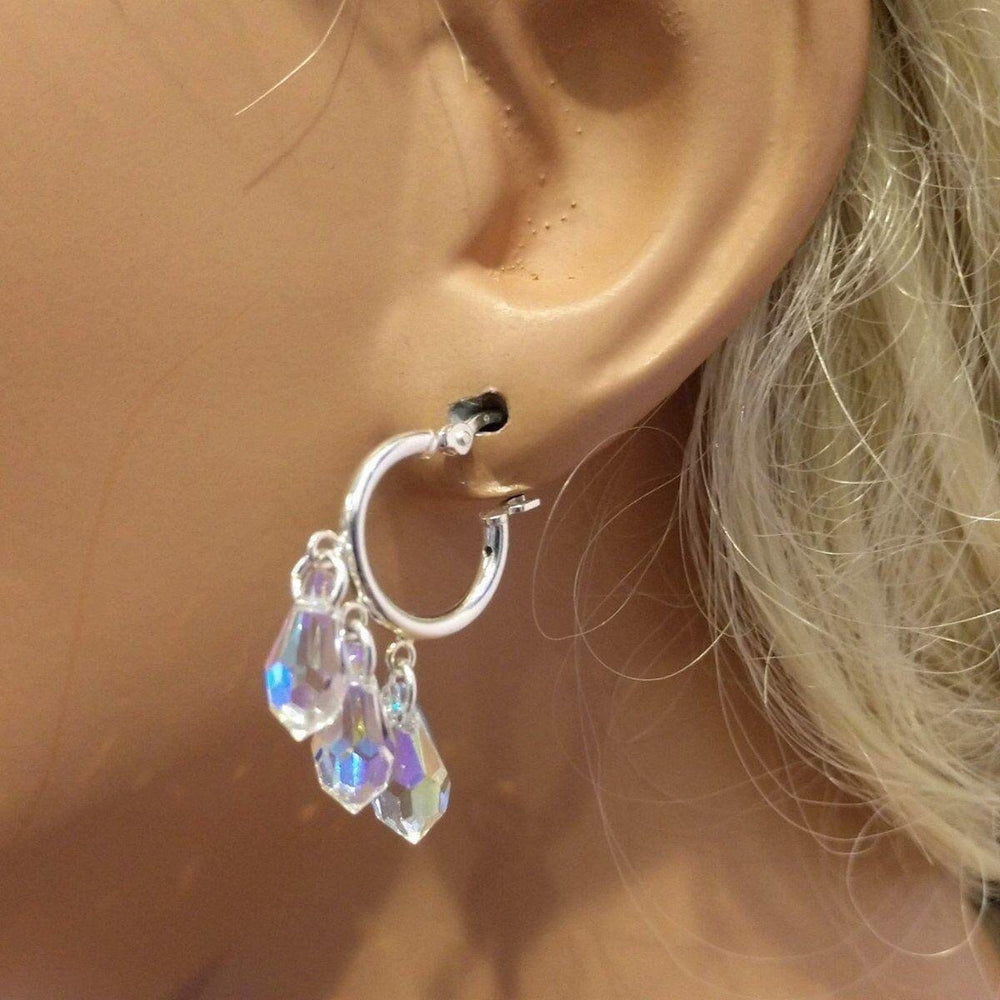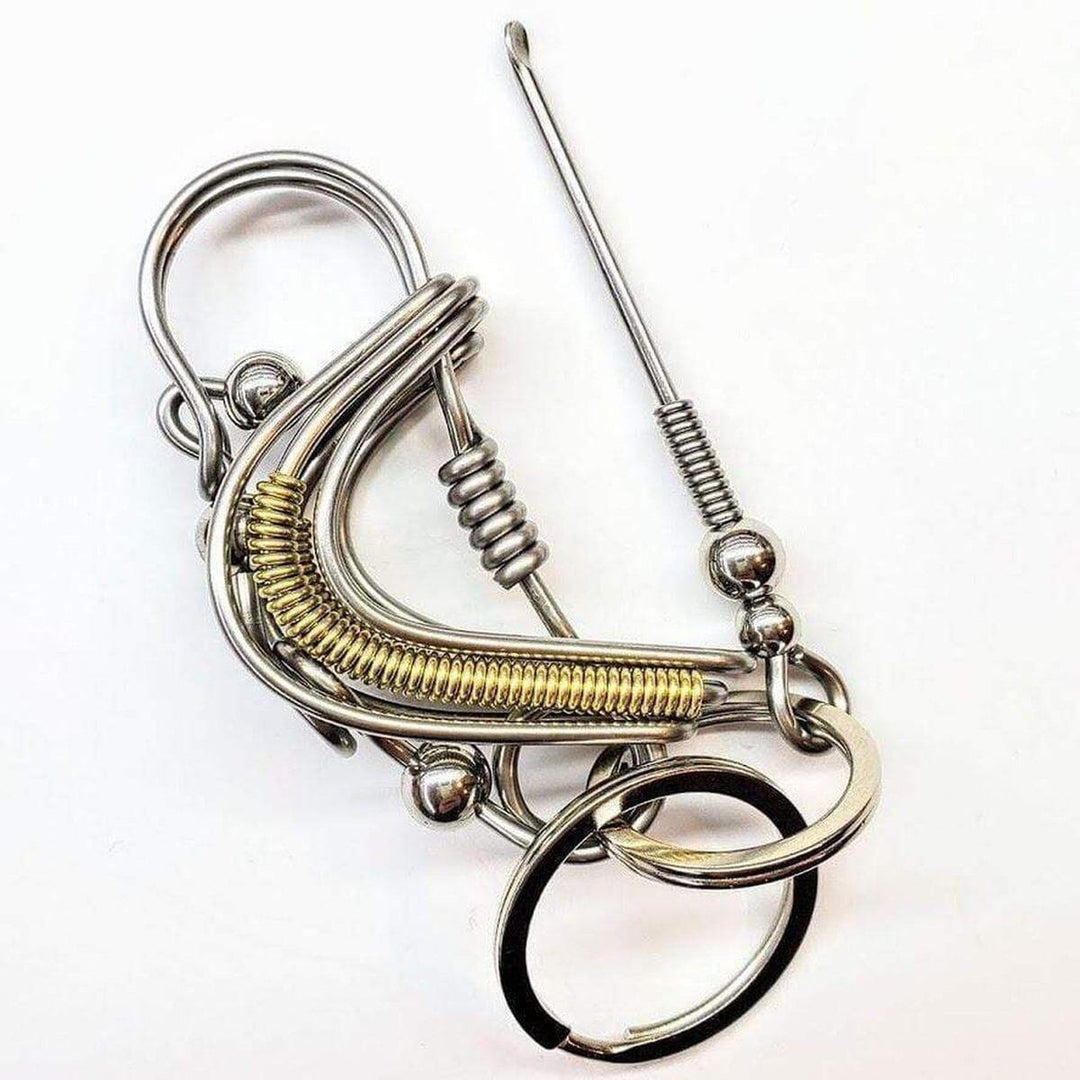How to Make Metalsmith Jewelry: A Comprehensive Guide
Metalsmithing is an ancient craft that transforms raw metals into beautiful, wearable art. Unlike simpler jewelry-making techniques, metalsmithing involves manipulating metal through various processes to create durable, professional-quality pieces. This guide will walk you through the fundamentals of metalsmithing, from setting up your workspace to completing your first projects and beyond.
Understanding Metalsmithing in Jewelry Making
Metalsmithing encompasses a wide range of techniques used to shape, join, and texture metals. At its core, metalsmithing involves:
-
Cutting and shaping metal sheets and wire
-
Joining pieces through soldering, riveting, or other connection methods
-
Texturing and finishing surfaces through hammering, stamping, or polishing
-
Adding dimension through forging, forming, and raising
Unlike wire wrapping or assembly-based jewelry making, metalsmithing allows you to fully transform the metal, creating pieces that can last generations. Handmade metalsmith jewelry carries a distinctive character that mass-produced items simply cannot match.
Essential Tools for the Beginning Metalsmith
Setting up your first metalsmithing workspace requires an investment in quality tools. While the list might seem extensive, you can start with the basics and expand as your skills grow.
Workspace Requirements
Before purchasing tools, consider these workspace essentials:
-
Dedicated space with good ventilation
-
Fireproof work surface (many metalsmiths use a soldering board or brick)
-
Adequate lighting (both overhead and task lighting)
-
Access to water for quenching and cleaning
-
Storage for materials and tools
Basic Tool Kit for Beginners
These fundamental tools will allow you to complete most beginner metalsmithing projects:
Measuring and Marking Tools:
-
Metal ruler (6-inch and 12-inch)
-
Dividers for measuring and marking
-
Scribe or metal marker
-
Caliper for precision measurements
Cutting Tools:
-
Jeweler's saw frame (adjustable)
-
Assorted saw blades (sizes 1/0 to 4/0)
-
Metal shears for straight cuts
-
Files (flat, half-round, and needle files)
Shaping and Forming Tools:
-
Bench block (steel or hardwood)
-
Ball-peen hammer
-
Chasing hammer
-
Rawhide or plastic mallet
-
Ring mandrel (if making rings)
-
Bracelet mandrel (if making bracelets)
-
Dapping block and punches for creating domes
Soldering Equipment:
-
Torch (butane for beginners, acetylene/oxygen for advanced work)
-
Soldering picks
-
Soldering tripod
-
Charcoal block or soldering pad
-
Cross-lock tweezers
-
Flux and flux brush
-
Pickle pot and solution (for cleaning after soldering)
Finishing Tools:
-
Various grits of sandpaper (220 to 1500 grit)
-
Polishing cloths
-
Steel wool (0000 grade)
-
Polishing compounds
-
Rotary tool with polishing attachments (optional but helpful)
Safety Equipment:
-
Safety glasses
-
Heat-resistant gloves
-
Ventilation system or fan
-
Fire extinguisher
-
Apron
Essential Materials for Metalsmithing
The beauty of metalsmithing lies in the variety of materials you can work with. As a beginner, start with these basics:
Metals
Sheet Metal:
-
Copper (most affordable for practice)
-
Brass (inexpensive with a gold-like appearance)
-
Sterling silver (traditional jewelry metal, more expensive)
-
Nickel silver (silver appearance without the cost)
-
Fine silver (softer and more forgiving than sterling)
Most beginners start with 20-24 gauge sheet metal, which is thick enough to be structural but thin enough to cut and form easily.
Wire:
-
Round, half-round, and square wire in various gauges
-
18-22 gauge wire is versatile for most jewelry applications
Solder and Flux
-
Hard, medium, and easy solder (available in sheet, wire, or chip form)
-
Flux paste or liquid (necessary for successful soldering)
Additional Materials
-
Liver of sulfur (for patina)
-
Polishing compounds
-
Findings (earring hooks, clasps, jump rings)
-
Gemstones or beads (optional for embellishment)
Fundamental Metalsmithing Techniques
Before attempting complete projects, practice these essential techniques that form the foundation of metalsmithing:
1. Metal Cutting
Sawing Technique:
-
Apply beeswax to your saw blade for lubrication
-
Maintain a 90-degree angle between the blade and metal
-
Use a steady, rhythmic motion
-
Let the saw do the work—avoid forcing the blade
-
For interior cuts, drill a small hole first, then thread your saw blade through
Practice Exercise: Cut a 1-inch square from sheet metal, then practice cutting simple shapes like circles and triangles.
2. Filing and Finishing Edges
Basic Filing Technique:
-
Secure your piece in a bench pin or vise
-
Hold the file at a slight angle to the metal
-
Push the file away from you in a smooth, even stroke
-
Lift the file on the return stroke (filing only cuts in one direction)
-
Rotate the piece to ensure even filing
Practice Exercise: Take your cut pieces and file the edges until smooth, practicing different file grips and angles.
3. Annealing Metal
Annealing softens metal, making it easier to shape or form.
Annealing Process:
-
Clean the metal thoroughly
-
Place on a soldering block
-
Heat evenly with a torch until it glows a dull red
-
Remove heat immediately
-
Quench in water (for copper, brass, and silver)
-
Pickle to remove oxidation
Practice Exercise: Anneal a small piece of copper or brass and observe how its flexibility changes.
4. Basic Soldering
Soldering permanently joins metal pieces using a lower-melting-point metal (solder).
Soldering Steps:
-
Clean both surfaces thoroughly
-
Apply flux to the joint
-
Place small pieces of solder (pallions) at the joint
-
Heat the metal (not the solder directly) until the solder flows
-
Allow to cool naturally
-
Pickle to clean
Practice Exercise: Cut two small pieces of metal and practice creating a T-joint and a butt joint.
5. Texturing Metal
Hammer Texturing:
-
Anneal your metal first for best results
-
Place on a sturdy surface (steel block or anvil)
-
Strike consistently with the desired hammer face
-
Work systematically across the surface
-
Anneal again if the metal becomes too work-hardened
Practice Exercise: Create sample texture swatches using different hammers and striking patterns.
Beginner Metalsmith Jewelry Projects
Once you've practiced the fundamental techniques, try these beginner-friendly projects:
Project 1: Textured Copper Pendant
Materials Needed:
-
20-gauge copper sheet
-
18-gauge wire for bail
-
Texturing hammer
-
Basic tools
Step-by-Step Process:
-
Cut a 1.5-inch circle from copper sheet
-
File edges smooth
-
Anneal the disc
-
Create texture using your hammer of choice
-
Clean and polish
-
Form a simple bail from wire
-
Solder the bail to the back of the pendant
-
Final polish and finish with liver of sulfur patina if desired
Project 2: Stacking Rings
Materials Needed:
-
18-gauge silver, copper, or brass wire
-
Ring mandrel
-
Rawhide or plastic mallet
-
Basic tools
Step-by-Step Process:
-
Measure wire length needed for your ring size (diameter × 3.14 + overlap)
-
Cut wire with flush cutters
-
File ends perfectly flat for a flush join
-
Form into a circle using round-nose pliers
-
Place on mandrel at desired size
-
Tap gently with rawhide mallet to shape
-
Solder the join
-
Clean and finish
-
Repeat to create multiple stacking rings
-
Experiment with different textures and widths
Project 3: Mixed Metal Earrings
Materials Needed:
-
22-gauge copper and brass sheet
-
Earring findings
-
Jump rings
-
Texturing tools
Step-by-Step Process:
-
Design and cut matching shapes from different metals
-
File and smooth all edges
-
Texture each piece differently
-
Drill small holes for jump rings
-
Clean and polish
-
Assemble with jump rings and earring findings
-
Apply patina if desired
Intermediate Metalsmithing Techniques
As your skills develop, explore these more advanced techniques:
Stone Setting
The most basic stone setting is a simple bezel, which is a band of metal that wraps around a stone.
Basic Bezel Setting Process:
-
Measure your stone's circumference
-
Cut bezel wire to length plus 1mm overlap
-
Form into the shape of your stone
-
Solder the join
-
Solder bezel to backplate
-
File and finish the bezel edge
-
Set the stone by pushing the bezel over the stone's edge
Forging and Forming
Forging involves shaping metal through hammering, often while hot.
Basic Forging Technique:
-
Anneal your metal
-
Use the ball-peen hammer to stretch and shape
-
Work systematically, rotating your piece
-
Re-anneal as needed when the metal becomes work-hardened
Riveting
Riveting provides a cold-connection alternative to soldering.
Simple Riveting Process:
-
Drill matching holes in pieces to be joined
-
Cut wire slightly longer than the combined thickness
-
Insert wire through holes
-
Create a head on one end using a ball-peen hammer
-
Trim excess wire on the other side
-
Form second head to secure the rivet
Advanced Metalsmith Jewelry Techniques
These techniques require more specialized tools and practice:
Repoussé and Chasing
These complementary techniques involve creating raised designs by hammering from both sides of the metal.
Basic Process:
-
Draw your design on the metal
-
Place on a pitch bowl or suitable surface
-
Use chasing tools to push the metal from the front (chasing)
-
Flip the piece and push from the back to create raised areas (repoussé)
-
Alternate between both sides until desired relief is achieved
Hydraulic Press Forming
A hydraulic press allows you to form metal using dies and significant pressure.
Applications:
-
Creating matching pairs of domed forms
-
Rapid production of consistent shapes
-
Achieving deeper forms than possible with hammering
Etching
Chemical etching creates recessed designs in metal.
Basic Etching Process:
-
Clean metal thoroughly
-
Apply resist material to areas you don't want etched
-
Immerse in appropriate etching solution
-
Monitor until desired depth is achieved
-
Neutralize, rinse, and remove resist
Selling Your Handmade Metalsmith Jewelry
Once you've developed your skills, you might consider selling your creations:
Building a Cohesive Collection
-
Develop a signature style or technique
-
Create pieces that work together thematically
-
Consider making mini-collections of 5-7 coordinated pieces
Pricing Your Work
Calculate costs including:
-
Materials (with 10-15% waste factor)
-
Labor (track your time and set a reasonable hourly rate)
-
Overhead (tools, workspace, utilities)
-
Markup (typically 2-3× your costs)
Selling Platforms for Handmade Metalsmith Jewelry
-
Local craft shows (great for direct customer feedback)
-
Online marketplaces (Etsy, ArtFire)
-
Your own website (complete control but requires marketing)
-
Social media (Instagram and Pinterest are particularly effective for jewelry)
-
Wholesale to local boutiques (lower margins but higher volume)
Marketing Your Metalsmith Jewelry
-
High-quality photography is essential
-
Tell the story behind your work
-
Document your process to share with customers
-
Consider the packaging experience
-
Develop a brand identity that reflects your style
Resources for Continuing Education
The journey of a metalsmith is one of continuous learning:
Books for Metalsmiths
-
"The Complete Metalsmith" by Tim McCreight
-
"Metalsmithing for Jewelry Makers" by Jinks McGrath
-
"The Art of Soldering for Jewelry Makers" by Wing Mun Devenney
Online Learning
-
Craftsy and Skillshare courses
-
YouTube tutorials (but verify techniques with reputable sources)
-
Membership sites like Jewelry Studies International
In-Person Education
-
Community college courses
-
Workshops at craft centers
-
Metalsmithing retreats and conferences
Conclusion: The Rewarding Path of Metalsmithing
Learning how to metalsmith jewelry opens a world of creative possibilities. While the initial learning curve can be steep, the ability to transform raw metal into wearable art provides satisfaction unlike any other craft. Each handmade metalsmith jewelry piece carries not only your creative vision but also the ancient tradition of metalworking that connects us to thousands of years of human creativity.
Remember that metalsmithing is as much about the journey as the destination. Each mistake becomes a learning opportunity, and each finished piece represents growth in your artistic development. With patience, practice, and passion, you'll find yourself creating handmade metalsmith jewelry that reflects your unique voice and vision.
Begin with the fundamentals, practice consistently, and allow yourself the freedom to experiment. Your path as a metalsmith will be as unique as the jewelry you create.
















Leave a comment